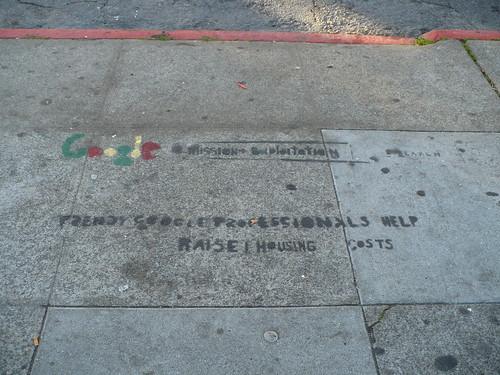I'm kind of torn on these shuttles. On one hand, it's a really huge freakin bus running up a residential street. But it is getting people that would likely be driving down 101 into more fuel efficienct ways. I don't have the same problem as others seem to have, complaining that affluent people have come to live in the neighborhood.

On the other hand, it's very stupid and un-environmental for these companies to locate such large office clusters away from conventional transit hubs. For all this talk of being green and forward thinking, companies like Google prove with their locational decisions that they don't understand how much transportation and land use plays into greenhouse gas emissions. But most of silicon valley is like that. Worst. Employment. Sprawl. Evah.
Because so many people want to live in a place that is walkable like San Francisco, you would think that businesses in the South Bay would look harder at trying to make more places like that instead of allowing even more junk down there. Facebook has actually caused a price spike in Palo Alto for helping thier workers live closer to work. I think this is a better solution than the shuttle buses but these companies are also skewing the local housing markets.
For "campuses" like Google, it seems that they could have built an office building downtown (they do have some offices in San Francisco) and saved more of thier employees money by allowing them to easily take transit to work. Instead they get more free parking which I would say if there is free parking at work, it is even more incentive to not live a location efficient lifestyle. Especially if you think you're special because you have solar panels over the parking. I wonder how much more Greenhouse Gases each of their employees emits because they drive a lot versus the amount of greenhouse gases those solar panels save.





